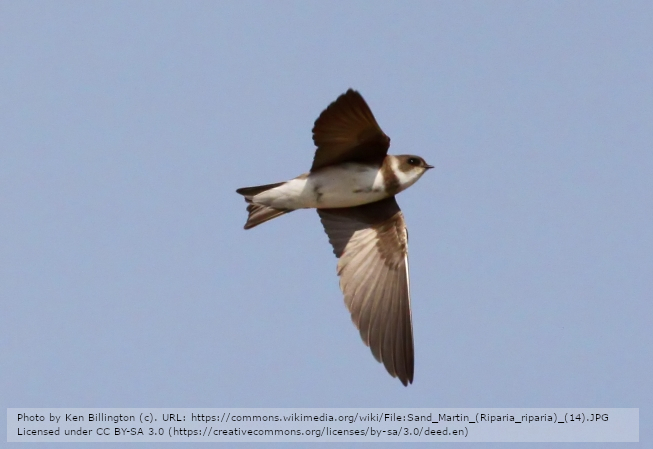Sedimenttyp och häckningsstrategi hos backsvalan Riparia riparia i västra Sverige
DOI:
https://doi.org/10.34080/os.v12.22829Nyckelord:
häckningsbiologi, habitatval, val av boplats, klimateffekter, antropogena effekterAbstract
This paper presents an investigation of the sediment used by the Bank Swallow (Sand Martin) Riparia riparia for the construction of breeding tunnels. Grain-size distribution, bulk density and hydraulic conductivity of breeding-tunnel sediment were investigated at four localities in western Sweden. The investigation shows that the Bank Swallow was consistent in using layers composed of a narrow range of fine and medium sand. Ninety percent of the investigated breeding burrows were located in fine to medium sand (0.125–0.5 mm) and 10% in coarse sand (0.5–1.0 mm). No breeding tunnels were found in sediment finer than fine sand or coarser than coarse sand. The fine to medium sand fraction has the properties to hold stable walls and keep dry tunnels even during rainy periods with heavy infiltration. The hydraulic conductivity of the sediment was in the range of 10–4 to 10–3 m/s and the bulk density 1,510–1,575 kg/m3. In Sweden, artificially excavated slopes in gravel and sand pits have long been the dominating breeding locality for the Bank Swallow. However, during the last two decades, four major factors have led to the decrease of breeding localities: (1) a decreasing demand of aggregate resources, (2) landscaping of gravel and sand pits and stabilization of eroding slopes, including river banks and shorelines, (3) a change to quarries as a source for aggregate production, and (4) concentrating gravel and sand exploitation to fewer and larger pits. It is concluded that these factors are important for the decline of the Bank Swallow population in Sweden and possibly elsewhere in Europe and North America.
Nedladdningar

Downloads
Publicerad
Referera så här
Nummer
Sektion
Licens
Copyright (c) 2002 Bo-Bertil Lind, Jimmy Stigh, Lars Larsson

Det här verket är licensierat under en Creative Commons Erkännande 4.0 Internationell-licens.
Författaren/författarna innehar copyright för varje enskilt bidrag, men samtliga bidrag är publicerade under en Creative Commons-licens, så att vem som helst kan dela och återanvända bidraget förutsatt att copyright-innehavaren erkänns.







